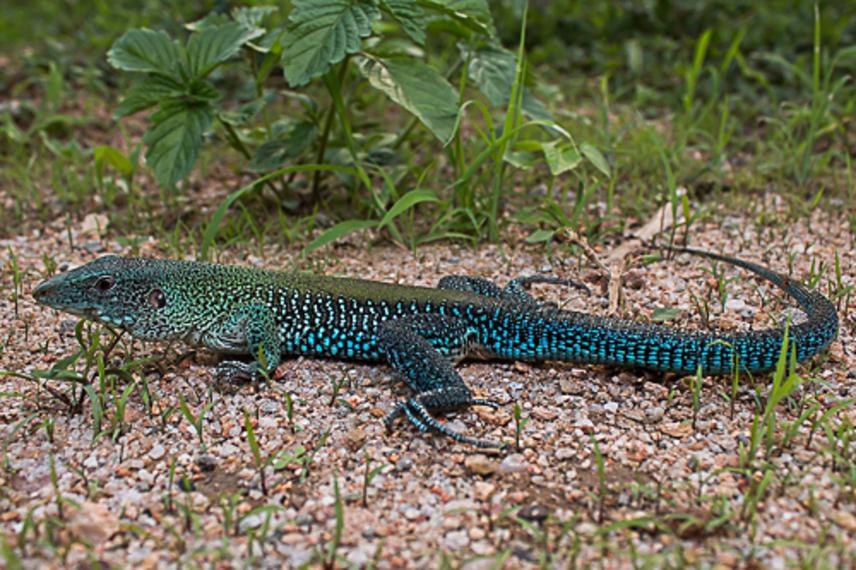Paulo Ragner Silva de Freitas
Reptiles are present in legends all over the world. Mysticism involving reptiles can generate a negative perspective, which can lead to some degree of threat. In the Caatinga (north-eastern Brazil), reptiles are severely threatened by fragmentation of their habitats and by hunting. This study aims to analyse the impact of anthropic actions on diversity and demography of reptiles in the Caatinga. We will conduct interviews with the local community to identify different relationships between humans and reptiles. We will sample of reptiles with fall traps to analyse diversity and demography (survival estimates, recapture rate, recruitment, and population size) and radio-telemetry to verify displacement and area of life.

Lizard specimen of ameiva ameiva photographed in the study area. ©Paulo Ragner.
The Caatinga, biome endemic to northeastern Brazil, has been increasingly suffering from a process known as desertification. Extensive areas of vegetation have been degraded due to unsustainable practices of territorial use, such as conversion of land to agriculture, indiscriminate use of wood and continued suppression of vegetation for goat and cattle breeding.
Unfortunately, there are few areas of Caatinga protected by law in the state of Paraíba and fall into categories of low protection of habitats, concentrated in two regions of the state. The other regions, where I will carry out this research, are unprotected by law and lack scientific studies. I noticed this gap and proposed project with the objective of evaluating the real impact of anthropic actions on diversity and population dynamics of lizards and snakes in unprotected Caatinga areas. The study will be carried out in two areas of Caatinga with different degrees of conservation located in a mountainous region (with altitude of 780 meters above sea level) in the municipality of Salgadinho, State of Paraíba, Northeast Brazil. For the analyzes of diversity and demography we will make 2 expeditions. Each expedition will last 20 days, totaling 40 days of sampling. In each area 10 sets of fall traps will be set up. Monitoring of snakes by radio-telemetry shall be carried out for 15 consecutive days, twice a year, totaling 30 days of sampling. Ethnoherpetological information will be obtained, for 7 consecutive days, through interviews and questionnaires containing information about local herpetofauna. We will elaborate lectures during 7 consecutive days in different schools in the municipality, and reptile exhibitions in 2 days consecutive.
Marking of the snakes will be performed through a partial cut of a ventral scale of the animal. The lizards will be marked by the implantation of fluorescent elastomer (IVE). Monitoring by radio-telemetry shall consist of the attachment of transmitters to the skin of snakes.
Lectures will be held in the municipal and state schools of the municipality of Salgadinho addressing the following themes: diversity of reptile fauna; ecological importance of reptiles and conservation of the Caatinga. In addition to lectures we will carry out an elaboration and distribution of educational booklets and an exhibition of reptiles entitled "Herpetofauna of the Caatinga: to know to preserve".